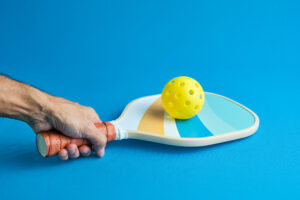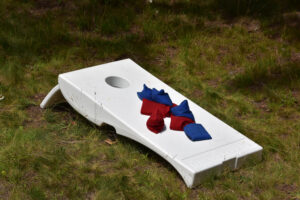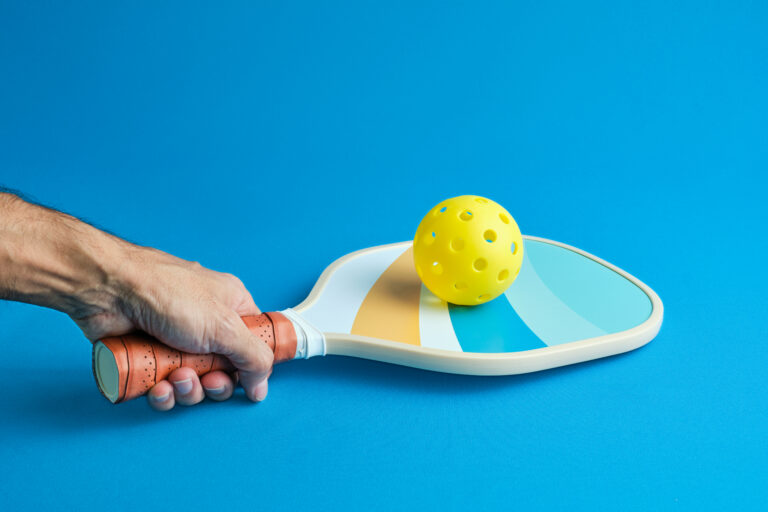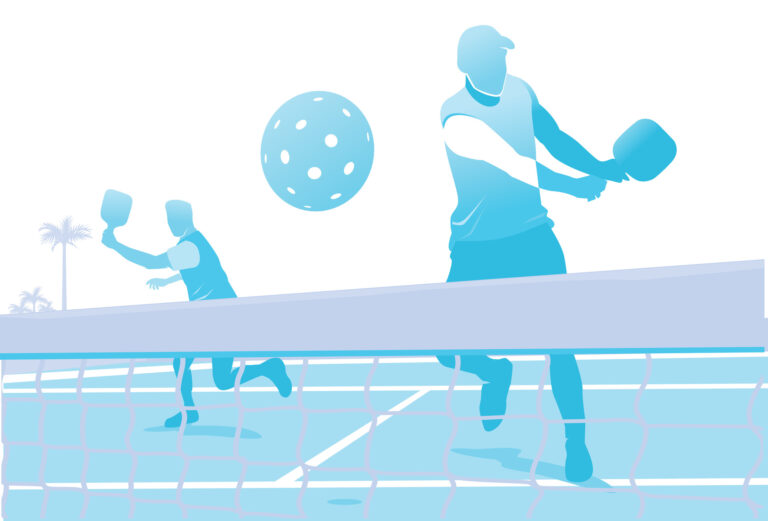Learn how to keep score in pickleball, the fast-growing sport. Our easy guide covers scoring rules, terminology, and tips to help you play and enjoy the game to the fullest. Perfect for beginners and enthusiasts.

Pickleball is one of the fastest-growing sports in the world, combining elements of tennis, badminton, and ping pong. Whether playing casually with friends or in a competitive league, understanding how to keep score in pickleball is key to enjoying the game. In this article, we’ll break down pickleball scoring rules, and the terms you need to know, and provide a step-by-step guide to help you master the scorekeeping system.
Before we dive into how to keep score in pickleball, let’s first understand the basics of the game.
Table of Contents
- Introduction to Pickleball Scoring
- Key Scoring Terms in Pickleball
- The Basic Scoring System
- Scoring in Doubles: How It Works
- When Do You Switch Sides of the Court?
- What Happens When a Game is Tied?
- How to Keep Score in Practice
- Conclusion: Why Proper Scorekeeping is Essential in Pickleball
- FAQs: Common Questions About Pickleball Scoring
How Do You Score in Pickleball?
In pickleball, points are scored when the opposing team fails to return the ball correctly. The game uses a side-out scoring system, meaning only the serving team can score points. It is played to 11 points, with players needing to win by at least 2 points. If a match is tied at 10-10, the game continues until one team leads by 2 points.
Key Scoring Terms in Pickleball
Before we dive deeper into the rules, let’s review some key pickleball terms related to scoring:
- Server: The player who is serving the ball.
- Sideout: When the serving team loses the rally, and the serve is turned over to the other team.
- Fault: A mistake made by a player that results in losing the rally.
- Point: A unit of scoring awarded to the team that wins a rally.
- Game: A match is typically played to 11 points, but tournaments may use 15 or 21 points.
- Deuce: When the score reaches 10-10, play continues until one team leads by two points.
- Double Bounce Rule: The ball must bounce once on each side before players can hit it in the air.
The Basic Scoring System
In pickleball, the score is announced in a three-number sequence: Server’s score, Receiver’s score, and Server number (whether the first or second server). Here’s how it works:
- First Number: The serving team’s score.
- Second Number: The receiving team’s score.
- Third Number: Whether it’s the first or second server (only for doubles).
Let’s break this down in simple steps:
- For singles, you only announce the server’s score and the receiver’s score.
- For doubles, you add one more number to the score: which server is currently serving.
Example in Doubles:
- Score: 4-3-1:
- 4 is the serving team’s score.
- 3 is the receiving team’s score.
- 1 means it’s the first server’s turn.
When the first server loses the point, the second player on the same team will serve, and the third number changes to 2 (second server). After the second server also loses the point, the other team gets the serve.
Scoring in Doubles: How Does It Work?
Scoring in doubles can be confusing for beginners. The key to understanding the rules is remembering the two-server system and sideout changes.
- The first team to serve always starts from the right-hand side of the court.
- If they score a point, they move to the left side to serve the next point.
- The server rotates between players each time the team loses a point.
- Only the team serving the ball can earn points. If the receiving team wins the rally, they get to serve.
When Do You Switch Sides of the Court?
Players must switch sides of the court every time they reach 6 points in a game played to 11 points. In games played to 15 or 21, the sides are switched when the team reaches 8 or 11 points, respectively. This ensures that both sides of the court are equally challenged by varying environmental conditions (like wind or sun).
What Happens When a Game is Tied?
If the score is tied at 10-10, play continues with the team that has 10 points trying to score 2 more to win. This is known as a “deuce” situation, where the game can go on until one team takes a two-point lead.
How to Keep Score in Practice
Here’s how to keep score during a pickleball game:
- Start the Game: The first server serves from the right-hand side. The score is called out as 0-0-2 (because the first server is serving). If they win the point, the score becomes 1-0-2.
- Switching Servers: After a team loses a point, the serve switches to the other player on the team. For example, if the first server loses, it’s now the second server’s turn to serve.
- Change Sides: Players will switch sides at the appropriate times, based on their score. Remember to keep track of the points, and always announce the score clearly.
Conclusion: Why Proper Scorekeeping is Essential in Pickleball
Proper scorekeeping is essential in pickleball to ensure fair play and smooth game progression. Whether you’re playing casually or in a competitive setting, understanding the scoring system is crucial to avoid confusion and ensure everyone is on the same page.
Now that you know how to keep score in pickleball, you’re ready to join the millions of players worldwide enjoying this fun and fast-paced sport.
FAQs: Common Questions About Pickleball Scoring
Q1: Can you score on a serve in pickleball?
Yes, you can only score when you are serving. If the receiving team wins the rally, they do not score a point but instead get the opportunity to serve.
Q2: How many points do you need to win in pickleball?
Games are typically played to 11 points. However, tournaments or some casual games may use 15 or 21 points.
Q3: What happens if the score is tied at 10-10?
If the score is tied at 10-10, the game continues until one team wins by 2 points.
Q4: Do you switch sides of the court during the game?
Yes, players switch sides at specific points in the game. In an 11-point game, players switch when the score reaches 6.
Q5: What is a sideout in pickleball?
A sideout occurs when the serving team loses a rally, and the serve is turned over to the opposing team.
By following this simple guide, you’ll quickly become comfortable with keeping score in pickleball, allowing you to focus on enjoying the game!










